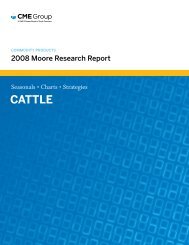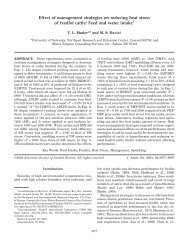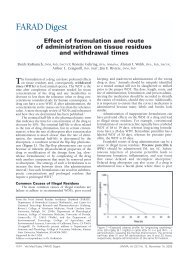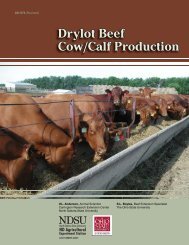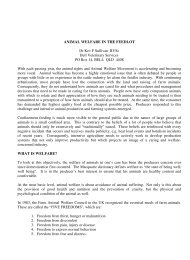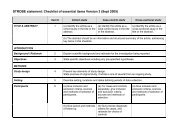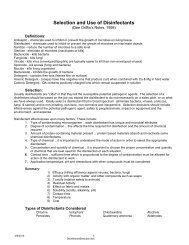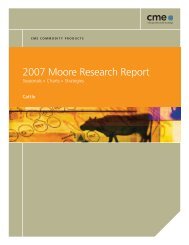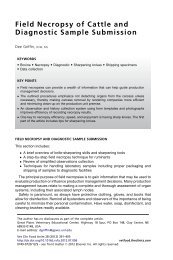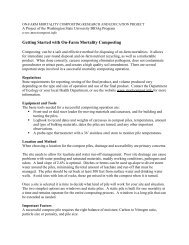CRIMES WITHOUT CONSEQUENCES - gpvec
CRIMES WITHOUT CONSEQUENCES - gpvec
CRIMES WITHOUT CONSEQUENCES - gpvec
You also want an ePaper? Increase the reach of your titles
YUMPU automatically turns print PDFs into web optimized ePapers that Google loves.
4.3 Exemptions<br />
federal humane slaughter laW<br />
Federal law allows the shackling, hoisting and cutting of conscious animals when<br />
performed in accordance with ritual requirements of the Jewish or other religious<br />
faith. Although severing the animal’s throat with one cut of a sharp knife is generally<br />
considered acceptable from a humane standpoint 84 , shackling and hoisting an alert animal<br />
is without question inhumane. An efficient upright restraint system has been developed<br />
and installed in many, but not all, kosher slaughter establishments. 85<br />
The ritual exclusion does not exempt ritual slaughter establishments from complying<br />
with humane handling requirements. Moreover, slaughter plants may be cited for failure<br />
to produce unconsciousness “by the simultaneous and instantaneous severance of the<br />
carotid arteries with a sharp instrument.” For example, the USDA-FSIS has issued NRs<br />
to slaughter establishments for using multiple cutting strokes before severing the arteries.<br />
The inspector filing one such citation noted that a 10-animal sample averaged more than<br />
five back and forth cutting strokes before severing the arteries. 86 In another case, the FSIS<br />
issued an NR to an Islamic establishment for stabbing conscious lambs directly in the<br />
heart. 87 In addition, the FSIS and the Texas Department of Health have cited plants for<br />
using ritual slaughter procedures in the absence of a Jewish or Muslim representative and<br />
for failure to have on file written ritual slaughter procedures from a religious authority.<br />
4.4 Application<br />
The Federal Meat Inspection Act and its regulations, including those related to humane<br />
handling and slaughter, apply to all federal and state inspected slaughter plants. Onfarm<br />
slaughter by the farm owner or operator or by a commercial, mobile slaughtering<br />
operation is exempt, unless specifically covered under state law. Custom slaughter<br />
establishments also are exempt; however, these operations are required to comply with<br />
certain sanitary requirements of the food safety regulations. 88 While spokespersons for<br />
the USDA have indicated that custom exempt establishments are expected to comply with<br />
humane handling and slaughter procedures as well 89 , no legal requirement currently exists<br />
that they do so.<br />
4.5 Penalties<br />
The Federal Meat Inspection Act provides both civil and criminal penalties, although<br />
the latter are seldom assessed. 90 The USDA may refer humane enforcement cases to the<br />
appropriate U.S. Attorney for criminal prosecution; however, no criminal prosecutions<br />
84 Grandin T, Kosher slaughter done right, Jerusalem Post, December 2004.<br />
85 For a discussion of the development and use of upright restraining devices, see Leavitt ES (with update by<br />
Halverson D), Humane slaughter laws in Animals and Their Legal Rights, Animal Welfare Institute, 1990<br />
(4th ed), pp. 52-65.<br />
86 NR issued to plant #00357M on October 16, 2003.<br />
87 NR issued to plant #20708M on March 3, 2003.<br />
88 9 CFR 303.1.<br />
89 Dee J, Slaughterhouse denies inhumane practices, Times of Trenton, January 21, 2006.<br />
90 21 U.S.C. 676.<br />
33




